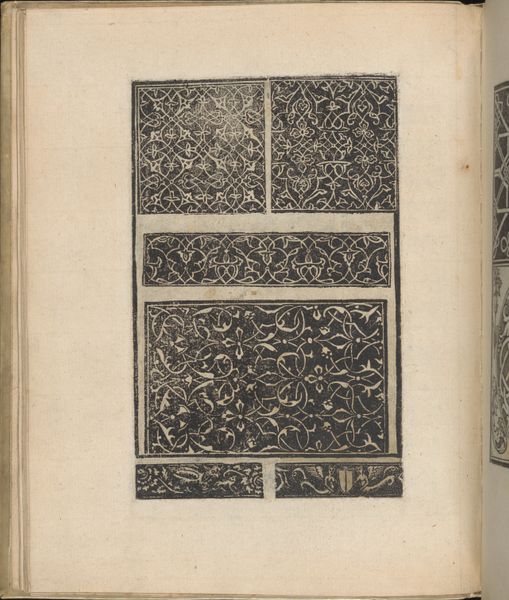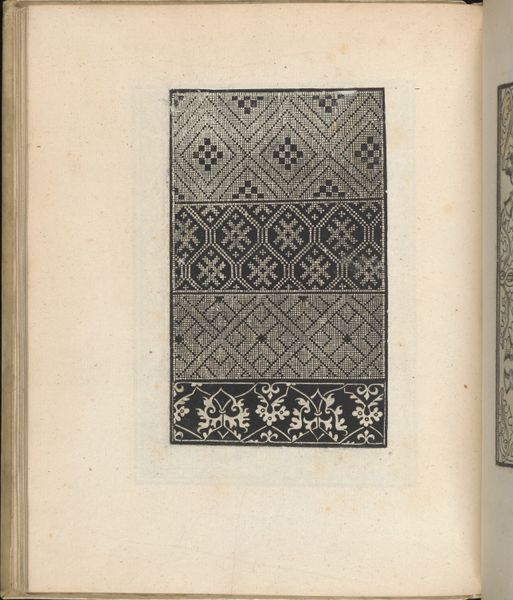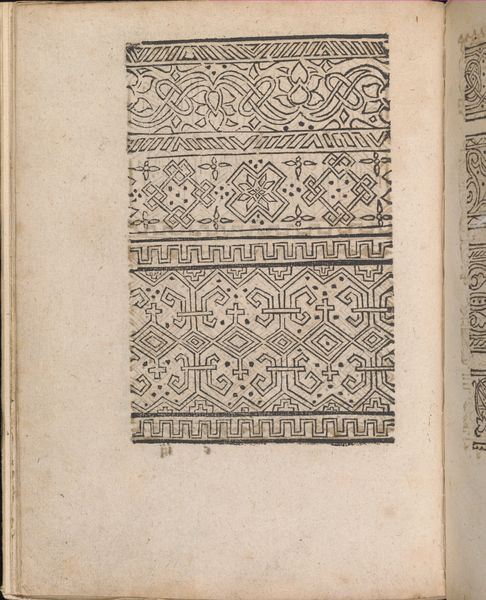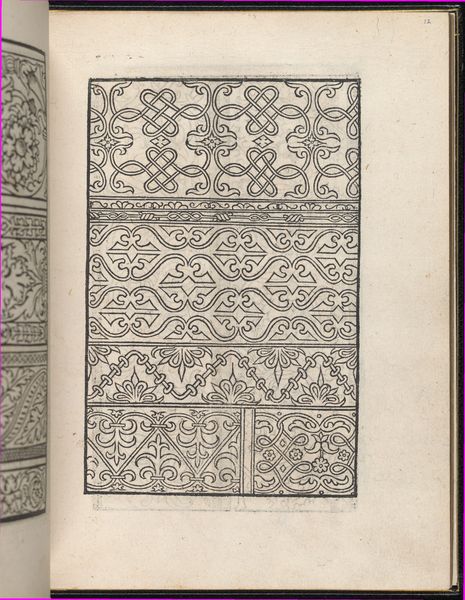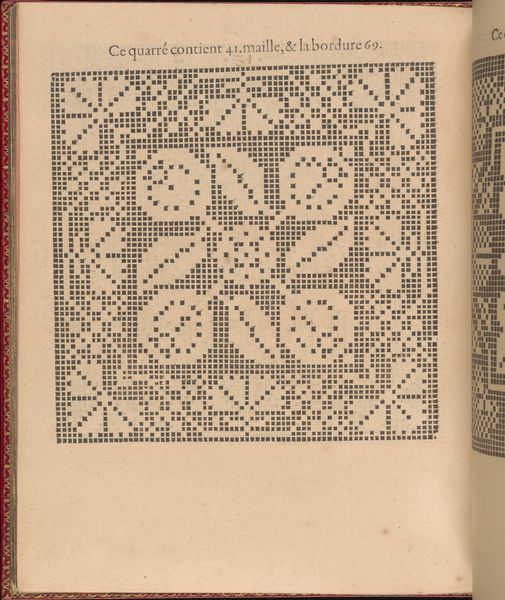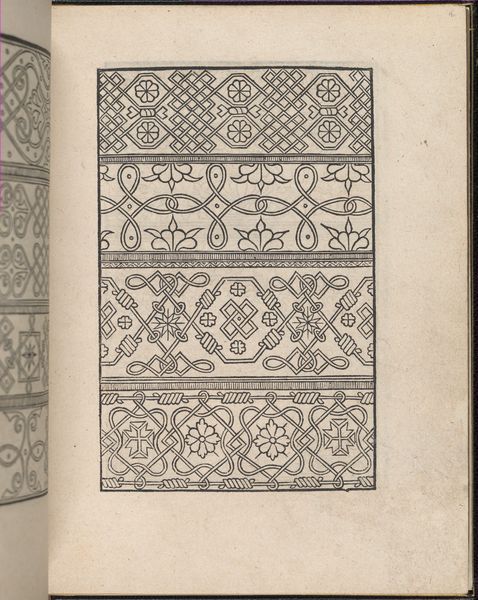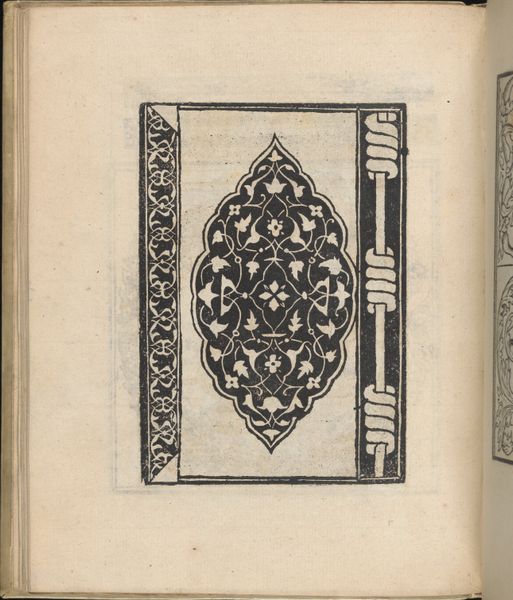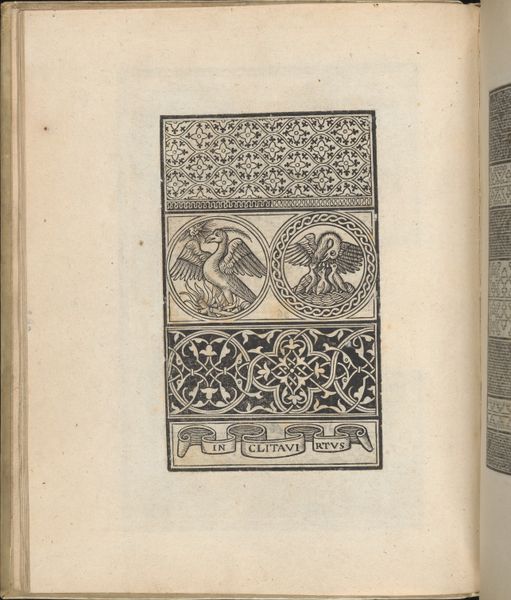
drawing, graphic-art, print, paper, engraving
#
drawing
#
graphic-art
# print
#
book
#
paper
#
islamic-art
#
italian-renaissance
#
engraving
Dimensions: Overall: 9 13/16 x 7 7/8 in. (25 x 20 cm)
Copyright: Public Domain
Editor: Here we have Matteo Pagano’s “Trionfo Di Virtu. Libro Novo… page 6 (recto)” from 1563. It’s a print, an engraving on paper. I’m struck by its precise geometry; it's almost like a textile pattern. How would you interpret this work? Curator: This piece invites us to consider the intersection of art, craft, and cultural exchange in the Renaissance. Consider that "Trionfo Di Virtu" translates to "Triumph of Virtue." Given the era's fascination with classical ideals, do you see any virtue being exemplified through pattern? Editor: Hmm, maybe order? The precision and repetition suggest a controlled environment, unlike the chaos they might have perceived outside the book's pages. Curator: Exactly! The very act of creating such precise patterns, particularly those evocative of Islamic art, was a complex negotiation of cultural boundaries. Remember that the Italian Renaissance was a period of intense interaction, both peaceful and violent, with the Islamic world. Can we interpret the visual language as an act of cultural appropriation, homage, or something more intricate? Editor: That's a lot to consider. So the act of recreating these patterns also demonstrates how European cultures engaged with non-European traditions at that time. But I see it’s from a book—does the format itself carry any cultural significance? Curator: Absolutely. The book, especially a printed book, represented the spread of knowledge and ideas. Its existence reflects evolving societal power dynamics, literacy rates, and global connectedness in Renaissance Italy. Consider who would have had access to such books, and what statement was being made by incorporating "exotic" patterns into a traditionally European format? Editor: This artwork reflects the complexities of cultural exchange and challenges my Eurocentric understanding of the Renaissance! Curator: And challenges us to question who and what shapes our understanding of art history and its relation to gender, power, and historical narratives.
Comments
No comments
Be the first to comment and join the conversation on the ultimate creative platform.
